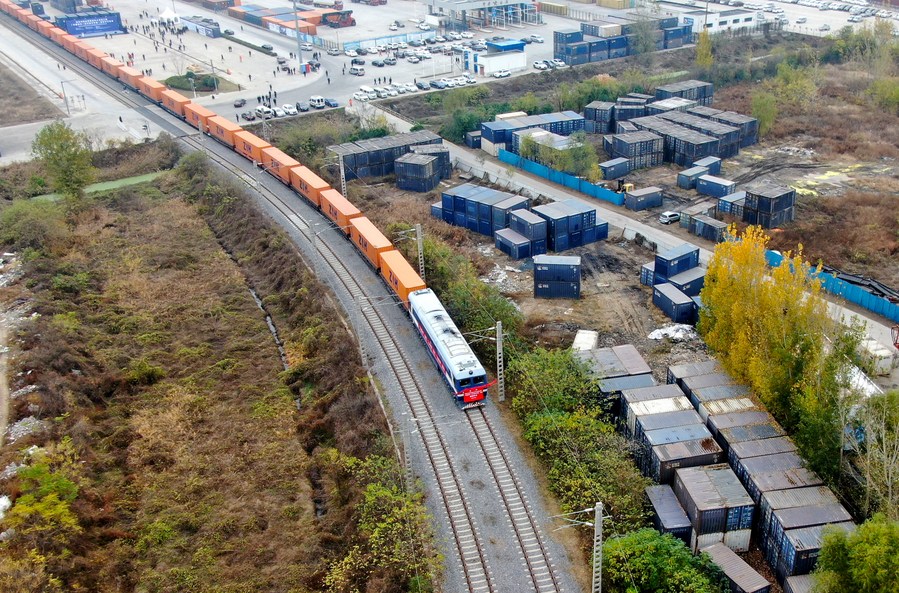Key takeaways on latest Belt and Road Initiative developments
The Belt and Road Initiative (BRI), proposed by China in 2013, has seen new achievements in the first half of 2021, with major infrastructure projects smoothly progressing and trade booming.
The Belt and Road Initiative (BRI), proposed by China in 2013, has seen new achievements in the first half of 2021, with major infrastructure projects smoothly progressing and trade booming.

Aerial photo shows a China-Europe freight train bound for Helsinki, Finland departing from Putian Station of Zhengzhou, central China's Henan Province, Nov. 20, 2020. (Xinhua/Hao Yuan)
The following are the latest key facts and figures on the development of the BRI.
-- Chinese enterprises have made steady advancements in major overseas BRI projects, said the National Development and Reform Commission.
The China-Pakistan Economic Corridor is in high-quality development, while the China-Laos railway, China-Thailand railway, Jakarta-Bandung High-Speed Railway, and Hungary-Serbia railway are making positive headway.
-- In the January-June period, China's goods trade with countries and regions along the Belt and Road surged by 37.9 percent year on year to reach 824.55 billion U.S. dollars.
-- China's non-financial outbound direct investment to the BRI countries amounted to 9.58 billion U.S. dollars during the period, up by 18 percent from a year ago.
-- Regarding contracted projects, contract value worth 39.35 billion dollars was completed in the first six months, up by 10.6 percent, year on year.
-- The China-Europe freight trains, traveling along 73 routes, has reached 168 cities in 23 European countries and become a major artery for trade between China and Europe.
-- The China-Europe freight-train service handled 7,377 trips in the first half of this year, with the cities of Xi'an, Chengdu, Chongqing, Zhengzhou, and Urumqi becoming major centers for the freight-train service.

